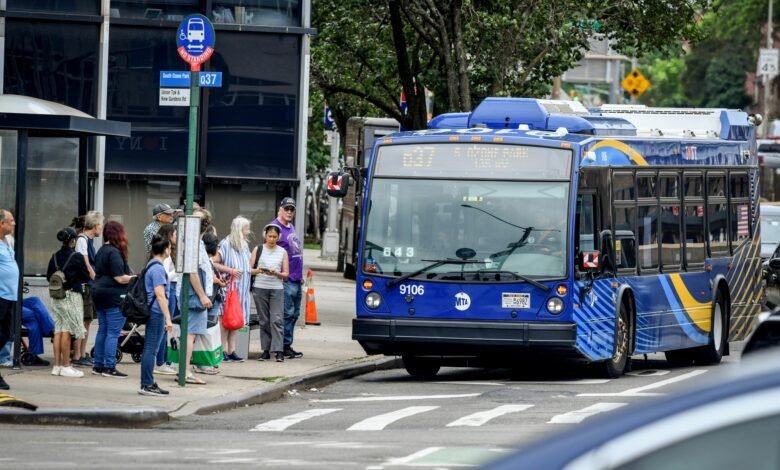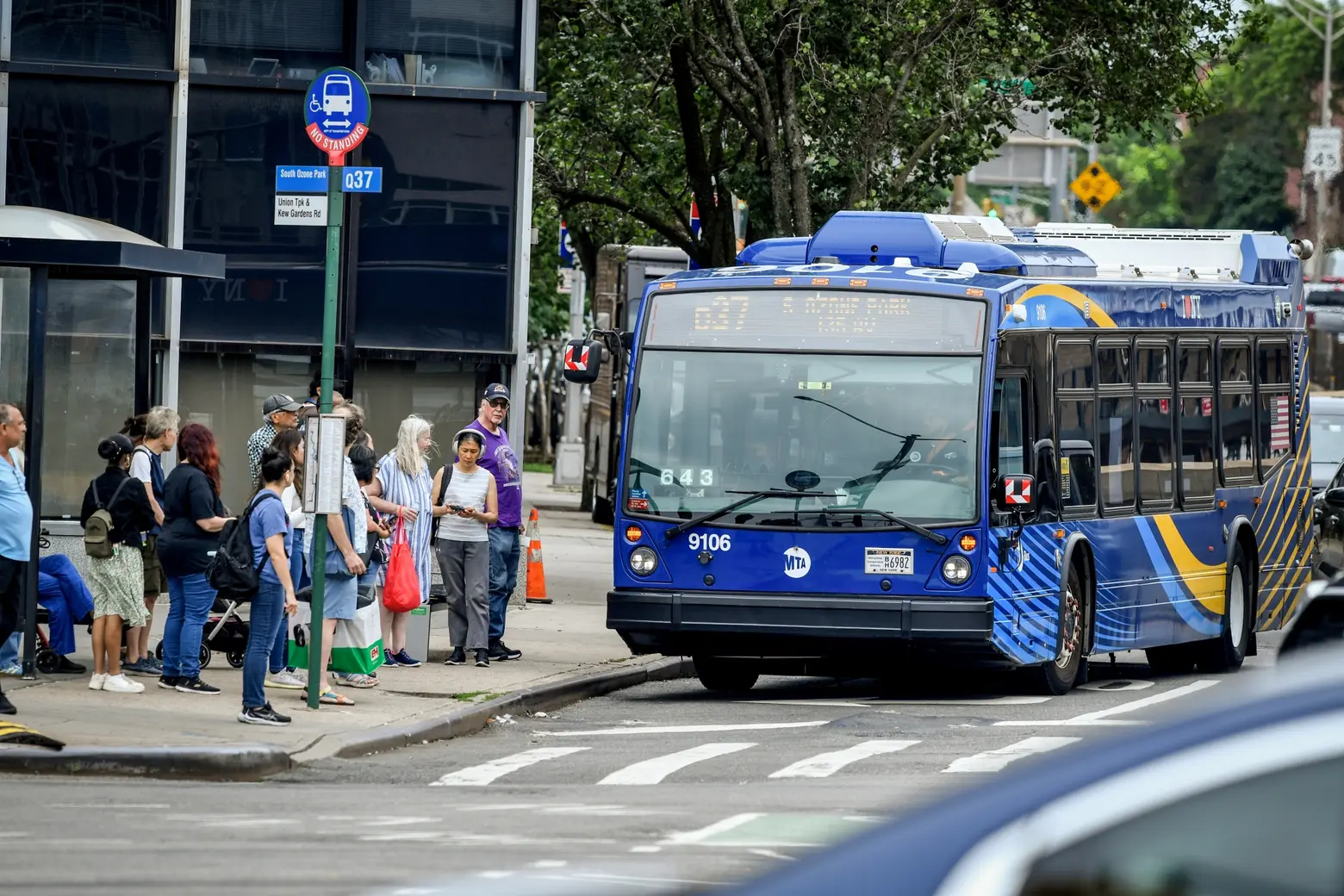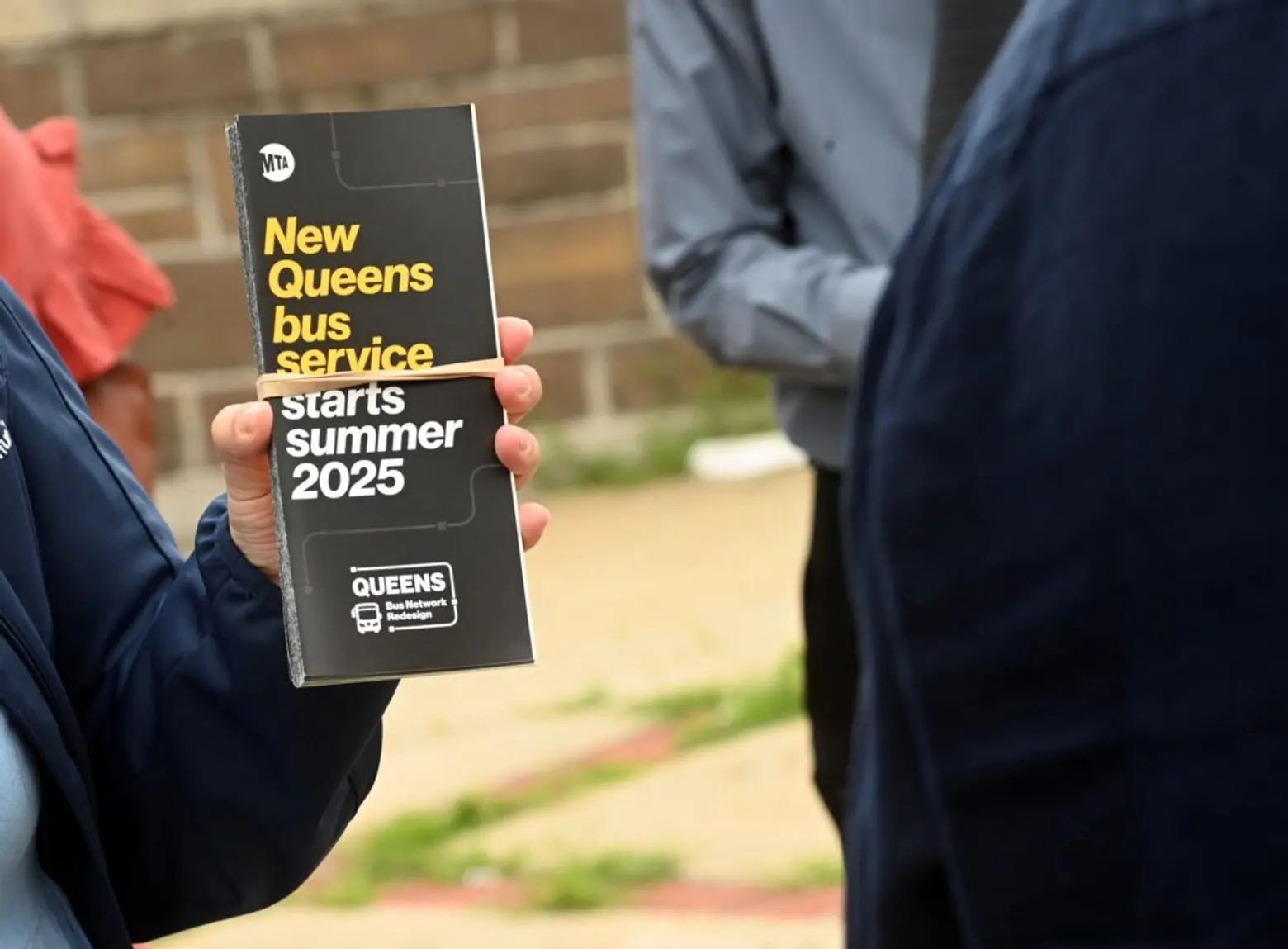Queens bus network overhaul rolls out Sunday


Attention Queens residents: You may want to double-check if your local bus stop still exists. On Sunday, the Metropolitan Transportation Authority (MTA) will launch phase one of its Queens bus network redesign—the most significant overhaul in the system’s 70-year history, affecting all but three of the borough’s bus routes. More than six years in the making, the redesign aims to improve transit equity, speed up commutes, strengthen connections to subways and rail, and enhance overall service for the borough’s roughly 800,000 daily riders.

The new bus network includes 124 routes, consisting of 94 local and 30 express routes. This marks a net increase of 11 routes from the existing system. According to a press release, the redesign also brings an additional $33.7 million in annual operational investments.
Phase one constitutes 70 percent of the full redesign. The second phase is slated to begin on Sunday, August 31.
The redesign prioritizes four customer priorities: reliability, speed, better connections, and simplified service. It introduces a new type of route called “Rush,” designed to help riders reach their destinations more quickly. Rush routes feature both local and non-stop segments to seamlessly connect outer borough neighborhoods and subway stations.
There are 25 Rush routes that pick up passengers locally at one end and skip stops for faster travel, stopping only at major transfer points and key destinations. Bus stop changes were carefully considered, with 84 percent of riders able to keep using the same stop they use today.
Additionally, 29 routes offer service every 10 minutes or better from 6 a.m. to 9 p.m. on weekdays. Twenty routes have increased frequency or extended hours. Key streets like Union Turnpike, Merrick Boulevard, Guy R. Brewer Boulevard, and western Northern Boulevard will see more frequent service.
The redesign fills gaps in the bus network and creates new connections to bus routes, subway lines, and the Long Island Rail Road (LIRR). It also improves accessibility by linking to more ADA-accessible subway stations. For example, in phase two, the Q22 will extend to the Far Rockaway LIRR station, with two daily trips serving Bayswater.
New and modified routes will expand the bus network’s reach and make interborough travel easier. The new Q98 Limited route connects Myrtle-Wyckoff Avenues on the Brooklyn-Queens border to downtown Flushing via the Horace Harding Expressway.
The route complements the existing Q58, which also runs between Flushing and Ridgewood, by offering a more direct alternative. The Q98 also connects to multiple subway lines, 31 other bus routes, and the LIRR Flushing-Main Street station. A new express route, the QM65, will launch Monday, June 30, connecting Laurelton and Rochdale in southeast Queens to downtown Manhattan.
The X63, X64, and X68 bus routes have been renamed with “QM” prefixes for clarity and rerouted in Manhattan to provide more consistent, direct travel. In response to operator feedback and public requests for better access to East Side hospitals, a new Manhattan-bound drop-off stop has been added at 2nd Avenue and East 32nd Street.
Together with the existing Local, Limited, Select Bus Service (SBS), and Express routes, the redesigned network will expand travel options and better serve the diverse needs of Queens bus riders.
“We’re excited to roll out Phase 1 of the redesigned bus network — a transformation driven by extensive customer feedback and shaped through years of community engagement,” NYC Transit Senior Vice President of Buses Chris Pangilinan said.
“This long-overdue upgrade modernizes an outdated bus system, delivering faster, more reliable service, better connections, and a network that reflects the needs of today’s riders.”
When phase two is implemented, Queens bus riders will gain access to an average of 5,696 additional jobs within 45 minutes—a 3.8 percent increase. Roughly 31 percent of riders will see job access improve by 10 percent or more, opening up over 17,000 new opportunities.
To prepare bus riders for the changes, the MTA has printed 18,500 “Guide-A-Ride” inserts and one million brochures, which have been distributed at community events and will continue to be handed out during both phases of implementation. Staff have also installed 4,000 posters on bus windows, launched digital ads, and updated most of the signage on 3,200 bus poles.
During the first week of implementation, bus drivers will continue to pick up customers at former stops along the modified routes if the stop’s signage or infrastructure has not yet been removed.
Complementing the launch of the redesign, the MTA on Sunday will begin a pilot program offering Queens bus riders a second free transfer when paying with the same device or card. The first transfer must occur within two hours of the initial tap, and the second within three hours. The pilot will run for about six months as the MTA evaluates the new bus network.
Six years of planning and community feedback, including 300 redesign events and nearly 20,000 comments, have helped shape the new bus network.
The MTA has carefully studied the demographic characteristics and equity areas of concentrated need to develop a plan that best meets the needs of riders. The final plan invests in service where it’s needed most, cutting trip times by five minutes or more for 23 percent of rides in equity areas, compared to just eight percent elsewhere.
The best way to learn about the project and how it may affect your commute is by visiting the main project page, the MTA says. You can search for changes to your local bus route here.
RELATED:
Source link
